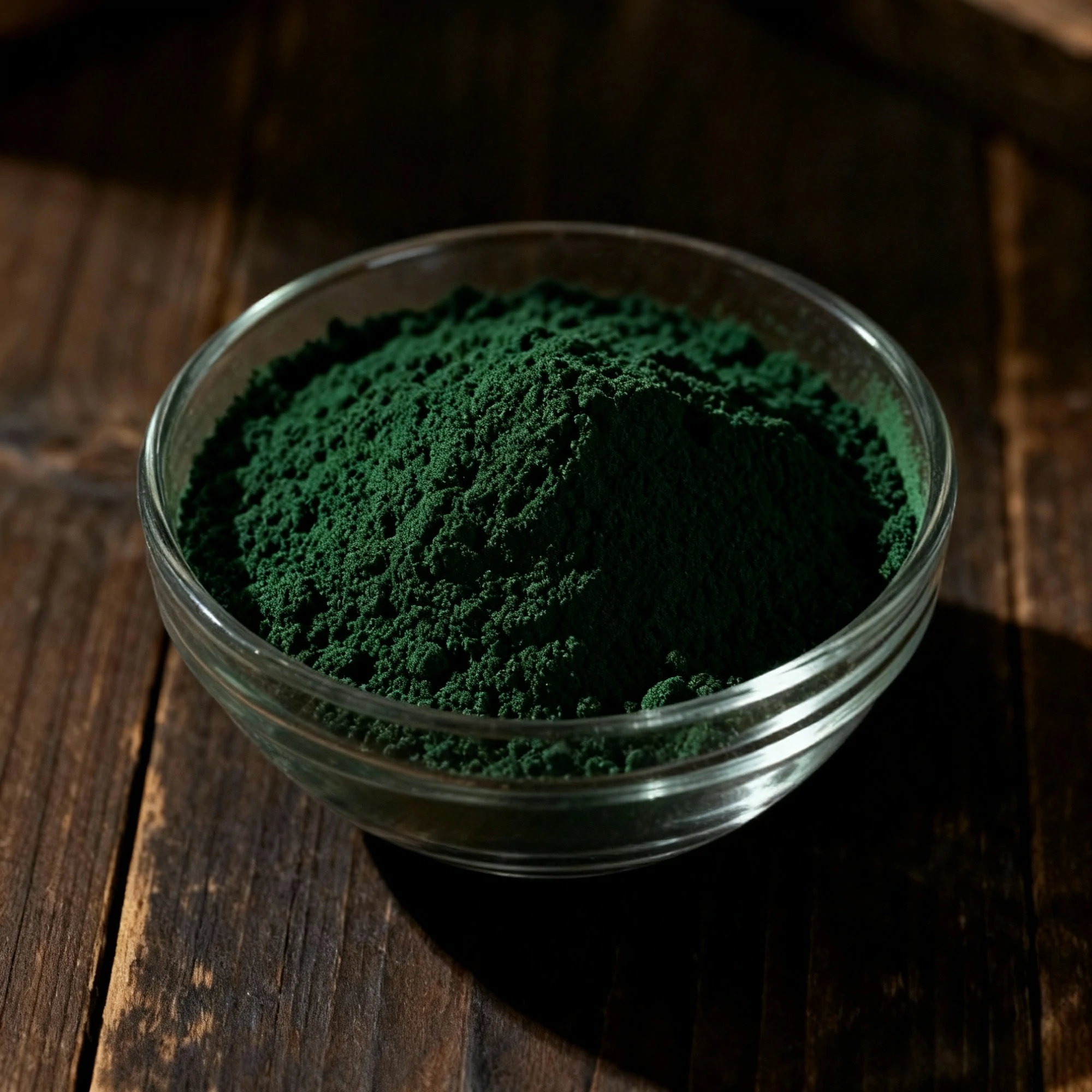

Gardenia Green
One unit of:20kg/carton
Product Info
What is Gardenia Green?
Gardenia Green is a natural food colorant extracted from the fruit of the *Gardenia jasminoides* plant, utilized primarily to impart stable green hues to food and beverage products.
How is Gardenia Green made?
| Step No. | Production Stage | Key Action | Control Point & Note |
|---|---|---|---|
| 1 | Raw Material Sourcing & Preparation | Select and clean ripe fruit from the Gardenia jasminoides Ellis plant. | Control Point: Fruit maturity and quality. Note: Only high-quality, fully ripe fruits with high geniposide and crocin content are selected to ensure potent color yield. |
| 2 | Gardenia Yellow Extraction | Crush the fruit and extract the yellow pigment (crocin) using an aqueous or ethanol-based solvent. The extract is then filtered and purified. | Control Point: Extraction temperature, time, and solvent concentration. Note: This step isolates the yellow base color. Efficient filtration is crucial to remove solid impurities. |
| 3 | Gardenia Blue Production (Biotransformation) | Treat the gardenia extract (containing geniposide) with the enzyme β-glucosidase. Then, react the resulting genipin with a primary amine (e.g., an amino acid) in a controlled fermentation process. | Control Point: pH, temperature, and reaction time. Note: This is the most critical conversion step. The precise conditions determine the final shade and intensity of the blue color component. |
| 4 | Blending for Green | Precisely blend the prepared Gardenia Yellow and Gardenia Blue solutions or powders in a calculated ratio. | Control Point: The mixing ratio. Note: The ratio is the key determinant of the final shade of green, which can range from yellowish-green (lime) to bluish-green (teal). This step requires high precision. |
| 5 | Standardization & Drying | Concentrate the blended liquid colorant and then spray dry it into a fine powder. Add excipients like maltodextrin as a carrier. | Control Point: Inlet/outlet temperature of the spray dryer and excipient ratio. Note: Drying converts the liquid into a stable, water-soluble powder. Excipients standardize the color value (E-value) and improve handling. |
| 6 | Quality Control Analysis | Test the final powder for key parameters: color value, solubility, pH, microbial count, and heavy metals (e.g., lead, arsenic). | Control Point: Conformance to food-grade specifications. Note: Each batch must be tested to ensure it meets strict safety and quality standards for use in food, beverage, and cosmetic applications. |
| 7 | Packaging | Package the finished Gardenia Green powder in airtight, multi-layer, light-proof containers (e.g., foil-lined bags or drums). | Control Point: Package integrity and storage conditions. Note: Proper packaging is crucial to protect the natural pigment from degradation by light, oxygen, and moisture, ensuring shelf-life stability. |
Technical Specifications
| CAS Number | 117148-27-3 |
| Solubility | Soluble in water and aqueous ethanol, insoluble in organic solvents |
| Storage Conditions | Cool, dry, airtight |
| Shelf Life | 24 Months |
Applications & Usage
Common Applications:
Mechanism of action:
| Parameter | Gardenia Green |
|---|---|
| Functional Category | Natural Colorant Blend |
| Key Ingredients | A blend of Gardenia Blue (genipin-amino acid pigments) and Gardenia Yellow (crocin and crocetin carotenoids), both derived from the fruit of *Gardenia jasminoides*. |
| Mechanism of Action | Functions as a subtractive color mixture. The yellow carotenoid components absorb light in the blue-violet region of the spectrum, while the blue genipin-derived components absorb light in the yellow-orange region. The combined reflectance of unabsorbed wavelengths in the green portion of the spectrum produces the perceived green color. |
| Application Effect in Product | Imparts a stable, natural green hue to food and beverage systems. Provides a clean-label alternative to synthetic colorants or less stable natural colors like chlorophyll, often with superior heat and light stability. Enhances visual appeal in confectionery, desserts, beverages, and dairy. |
Comparison:
| Product Name | Category/Type | Key Features | Strengths (vs peers) | Weaknesses (vs peers) | Best Use Cases | Why Choose |
|---|---|---|---|---|---|---|
| Gardenia Green | Paint Color | A soft, nature-inspired green shade, often with subtle yellow or gray undertones, reminiscent of garden foliage. | Offers a calm, organic, and restorative feeling. Versatile enough to act as a neutral or a feature color. | The specific shade can vary greatly by manufacturer; can appear washed out in poor lighting or overly yellow in warm light. | Bedrooms, living rooms, and bathrooms where a serene, natural atmosphere is desired. Complements natural wood, stone, and neutral palettes. | To bring a sense of tranquility and the outdoors into an interior space without using a bold or overwhelming color. |
Technical Documents
Available Documentation
Spec sheet & COA
Safety Data Sheet (SDS)
MSDS available
Certificate of Analysis (COA)
Quality assurance documentation
Technical Data Sheet
Detailed technical specifications